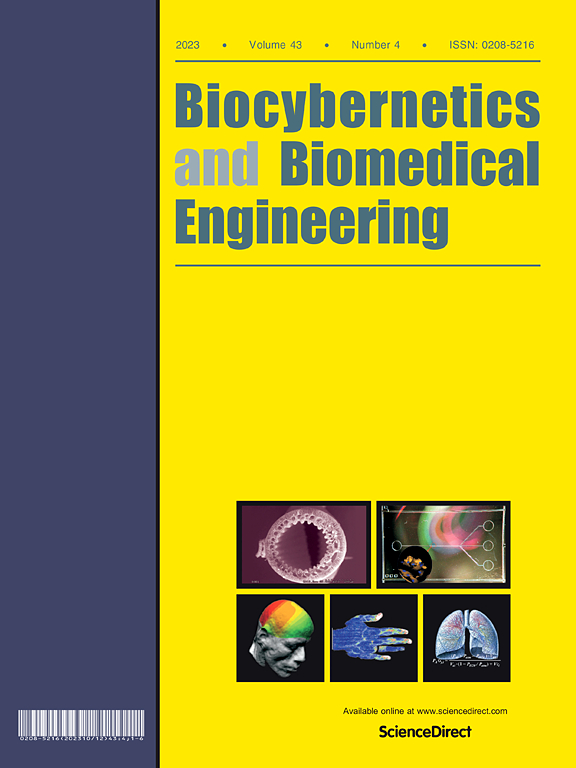Hemodynamic factors in coronary artery lesions: An in-vitro tomographic particle image velocimetry study
IF 6.6
2区 医学
Q1 ENGINEERING, BIOMEDICAL
引用次数: 0
Abstract
This study addresses the gap in in-vitro research by providing three-dimensional flow field measurements of a complete coronary artery model to explore coronary artery hemodynamics. An in-depth analysis of the left coronary artery (LCA) was conducted using tomographic particle image velocimetry (TPIV) in a patient-specific model with a mock circulatory loop (MCL) that simulates physiological conditions. The study maps wall shear stress (WSS) and flow rates across arterial branches, highlighting the predisposition to atherosclerosis in the left anterior descending (LAD) artery due to its unique hemodynamic properties. Intermittent low WSS is identified and considered to be strongly associated with diffuse coronary artery disease (CAD). Additionally, statistical analysis of fluid topology reveals a significant correlation between the kinematic vorticity number and CAD, suggesting its potential as a CAD risk indicator in clinical practice. This research enhances the understanding of coronary hemodynamics and contributes to establishing a theoretical framework for flow-induced atherosclerosis.
冠状动脉病变中的血流动力学因素:体外层析颗粒图像测速研究
本研究通过提供完整冠状动脉模型的三维流场测量来探索冠状动脉血流动力学,解决了体外研究中的空白。利用层析粒子图像测速(TPIV)技术,在一个模拟生理条件的模拟循环环(MCL)的患者特异性模型中对左冠状动脉(LCA)进行了深入分析。该研究绘制了动脉分支的壁剪切应力(WSS)和血流速率,突出了左前降支(LAD)动脉由于其独特的血流动力学特性而易发生动脉粥样硬化。间歇性低WSS被认为与弥漫性冠状动脉疾病(CAD)密切相关。此外,流体拓扑的统计分析揭示了运动涡度数与CAD之间的显著相关性,提示其在临床实践中具有作为CAD风险指标的潜力。本研究增强了对冠状动脉血流动力学的认识,有助于建立血流诱导动脉粥样硬化的理论框架。
本文章由计算机程序翻译,如有差异,请以英文原文为准。
求助全文
约1分钟内获得全文
求助全文
来源期刊

Biocybernetics and Biomedical Engineering
ENGINEERING, BIOMEDICAL-
CiteScore
16.50
自引率
6.20%
发文量
77
审稿时长
38 days
期刊介绍:
Biocybernetics and Biomedical Engineering is a quarterly journal, founded in 1981, devoted to publishing the results of original, innovative and creative research investigations in the field of Biocybernetics and biomedical engineering, which bridges mathematical, physical, chemical and engineering methods and technology to analyse physiological processes in living organisms as well as to develop methods, devices and systems used in biology and medicine, mainly in medical diagnosis, monitoring systems and therapy. The Journal''s mission is to advance scientific discovery into new or improved standards of care, and promotion a wide-ranging exchange between science and its application to humans.
 求助内容:
求助内容: 应助结果提醒方式:
应助结果提醒方式:


